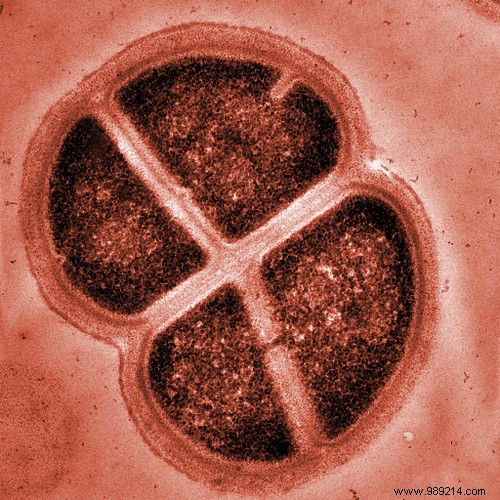One of the most radioresistant organisms in the world is called Conan the Bacteria, in reference to the film Conan the Barbarian from 1982. Apart from cosmic radiation, this incredible bacterium can withstand many other extreme situations and conditions.
Conan the Bacteria is the nickname given to Deinococcus radiodurans. This polyextremophile bacterium is one of the most radioresistant organisms known in the world. It resistant to ionizing radiation , to the sidereal vacuum, to acid, to UV rays, to drying out, to hunger or even to extreme temperatures. Deinococcus radiodurans was discovered in 1956 by the American researcher A.W. Anderson. The person concerned had tried to sterilize boxes of corned beef by subjecting them to gamma rays. His surprise was great when he discovered that colonies of Deinococcus radiodurans had survived the radiation.
Since 1998, the organization has been listed in the Guinness Book of Records as the most radiation resistant life form. This one survives 1.5 million rads (former unit) of gamma radiation, about 3,000 times the amount capable of killing a human. Decades after its discovery, Conan the bacterium continues to intrigue the scientific community.
The most important research on it was carried out between 2015 and 2018 on the International Space Station (ISS) as part of the ExHAM program of JAXA, the Japanese space agency . A publication in the journal Frontiers in Microbiology in August 2020 details this work, the objective of which was to understand its survival mechanism and this is the origin of its great resistance.

Remember that in addition to being in orbit around our planet at an altitude of 400 km, the ISS is in an extreme environment. Cold and heat reign supreme here. Indeed, the side of the station facing the sun can reach 121°C, and the opposite side -157°C. The ISS is also exposed to cosmic radiation. The experiment consisted in depositing bacteria Deinococcus radiodurans on the station's solar panels. After three years of experiment, all bacteria aggregates larger than 0.5 mm had survived. The leaders of the study claimed that the bacteria could have lived between 15 and 45 years outside the ISS. The fact is that it is able to repair its own DNA indefinitely after being damaged. This is a mechanism allowing him to resurrect a few hours after his death.
This work suggests that Deinococcus radiodurans could survive extreme conditions of a journey from Earth to Mars. Other research suggests that they could be used to create very robust storage devices. It would therefore be a question of storing the data in the DNA of the bacteria and no longer risking losing them even if a disaster of major importance occurs.